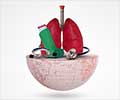Ambulatory Management of Burns
Burns can be devastating injuries that result in death or lifelong scarring, disfigurement and dysfunction. Ambulatory management of burns is divided into acute treatment and follow-up care. Acute management includes measures
Acute Management of Burns
It is of paramount importance to determine whether a patient with a burn injury should be hospitalized for hydration and burn care or whether ambulatory management appears feasible. Classification of burns as minor, moderate or major facilitates hospitalization decisions. Proper burn classification requires accurate determination of the depth and extent of the wound(s), as well as consideration of critical issues such as skin thickness, burn location and comorbid conditions.
Depth of a Burn
The traditional classification of burns as first, second or third degree is being replaced by the designations of superficial, superficial partial thickness, deep partial thickness and full thickness. Burn depth has an impact on healing time, the need for hospitalization and surgical intervention, and the potential for scar development. Although accurate classification is not always possible initially, the causes and physical characteristics of burns are helpful in categorizing their depth (Refer Table 1).
Differentiating a deep partial-thickness burn from a full-thickness burn can be quite difficult initially. Revisions of burn-depth estimations are often necessary in the first 24 to 72 hours and may be required through the first two or three weeks. For instance, although a full-thickness burn typically has a white or charred appearance, it can be red after a scald injury. It is also possible to have a full-thickness burn underneath a blister, which is usually a characteristic feature of a partial-thickness burn. Furthermore, thin skin sustains deeper burn injuries than may be suggested by the initial appearance of the wound. Thin skin is common on the volar surface of the arms and on the medial thigh, perineum and ears. All skin can be presumed to be thin in children younger than five years and in adults older than 55 years. It is best to assume that there are no shallow burns in these age groups.





Comments
Excellent information!